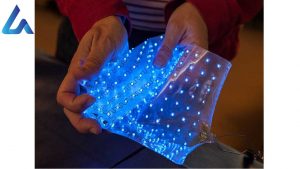Photonic Crystal Fiber (PCF) is a class of optical fiber-based on the properties of photonic crystals. It was first explored in 1996 at the University of Bath, UK. Because of its ability to confine light in hollow cores or with confinement characteristics not possible in conventional optical fiber.
Photonic crystal fibers have wavelength-scale morphological microstructure running down their length. This structure enables light to be controlled within the fiber in ways not previously possible or even imaginable.
Read: What is Color Changing Fabric?
Types of Photonic Crystal fiber
It may be divided into two categories, high index guiding fibers and low index guiding fibers. Similar to conventional fibers, high index guiding fibers are guiding light in a solid core by the Modified Total Internal Reflection (M-TIR) principle. The total internal reflection is caused by the lower effective index in the microstructured air-filled region.
Construction
Generally, such fibers are constructed by the same methods as other optical fibers: first, one constructs a “preform” on the scale of centimeters in size, and then heats the preform and draws it down to a much smaller diameter (often nearly as small as a human hair), shrinking the preform cross-section but (usually) maintaining the same features.
In this way, kilometers of fiber can be produced from a single preform. The most common method involves stacking, although drilling/milling was used to produce the first aperiodic designs. This formed the subsequent basis for producing the first soft glass and polymer structured fibers.
Most photonic crystal fibers have been fabricated in silica glass, but other glasses have also been used to obtain particular optical properties (such as high optical non-linearity).
There is also a growing interest in making them from polymer, where a wide variety of structures have been explored, including graded index structures, ring structured fibers, and hollow-core fibers.
These polymer fibers have been termed “MPOF”, short for microstructured polymer optical fibers (van Eijkelenborg, 2001). A combination of a polymer and a chalcogenide glass was used by Temelkuran et al. (2002) for 10.6 μm wavelengths (where silica is not transparent)
Follow us on Google News

